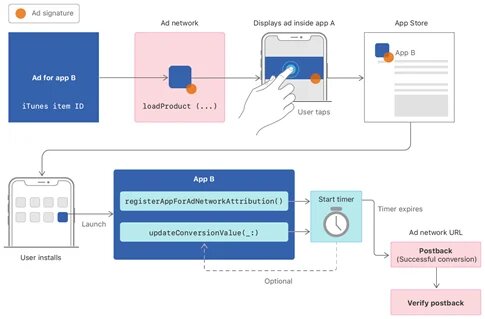The anticipated arrival of changes to iOS 14 has sent the mobile AdTech industry into a frenzy to adapt to the new world of advertising. A world without IDFA. Earlier this year, Apple announced that it would update iOS 14 to allow users to opt-out of in-app ad tracking, taking away the very basis of mobile advertising by making IDFA an opt-in rather than opt-out. While since then Apple has announced a decision to delay enforcing this feature until next year, the AdTech ecosystem is already preparing ahead to adapt to the new way of serving ads.
What is the IDFA and What Happens with iOS 14
One of the ways advertising on mobile devices works is based on a Device ID. Apple’s Identifier for Advertisers (or IDFA) can be understood as a unique combination of a string of numbers and letters assigned to each Apple device. Apple introduced IDFA in 2012 as a replacement for its Unique Device Identifier (UDID) The IDFA helps advertisers to identify a user without revealing their personal information and yet be able to deliver targeted messages. Mobile attribution networks and measurement companies also depend on the IDFA for measuring campaign performance. Having a unique identifier for every Apple user, advertisers are able to have greater control over their advertising campaigns by knowing if a particular user clicks on an ad and eventually installs the app. Working with a mobile measurement partner (MMP) advertisers are able to attribute results of the performance campaign.
With the IDFA opt-in requirement, all app owners will have to specifically ask for user permission before they can use the identifier for tracking and ad serving. In a post-GDPR world, user privacy is already a tricky issue. Add to it an opt-in for tracking, and we are likely to see drastic changes to how advertising on mobile will function. In the absence of IDFA, personalized targeting is going to be difficult, not only for advertisers but also for DMPs, MMPs, and ad networks. Mobile retargeting and frequency capping will also be challenging as they rely on the user’s IDFA that is available to ad networks to show retargeting ads to lapsed users. Another area where the absence of IDFA will be hugely felt is attribution and measurement. Without IDFA, MMPs and attribution providers will struggle to provide accurate last-touch and multi-touch attribution, the backbone of mobile advertising.
It is important to understand that with iOS14, Apple hasn’t specifically removed the existence of IDFA, but made it into an explicitly opt-in feature. Industry experts, however, suggest that we are likely to see a majority of users who will refrain from allowing such permissions for advertisers.
Enter, the SKAdNetwork
Apple is introducing SKAdNetwork, its own API that would “help advertisers measure the success of ad campaigns while maintaining user privacy.” The SKAdNetwork would allow ad networks to attribute app installs by receiving a signed signal from Apple. According to Apple’s product documentation, the API would involve three key participants – ad networks (a platform that delivers the ad), source apps (app where the ad is displayed), and advertised apps. When a user clicks on an ad, installing the app, the device would send an install validation postback (with iOS 14 this will not be in real-time and there would be two versions of the install validation postback) to the ad network. This would have a campaign ID but no user-/device-specific data will be provided. Apple explained this in the following illustration:

Thus, using SKAdNetwork, registered ad networks would be able to get attribution information in a more private and anonymous way. In addition to this, ID for Vendors (IDFV) can be used for app analytics by developers.
How to Prepare for the New World of Advertising on iOS 14
Even as Apple has decided to delay the changes to IDFA to early next year, to give developers enough time to prepare, the AdTech ecosystem is already in full gear to adapt to the changes.
If you are an ad network or a developer, here are some things to consider while preparing for the changes ahead:
- Begin to, if not already, register with Apple’s SKAdNetwork.
- Develop internal algorithms to optimize campaigns in compliance with Apple’s privacy guidelines.
- Get knowledgeable about alternatives as probabilistic matching with the help of IDFV, fingerprinting and persona attribution
- Integrate with Apple’s AppTrackingTransparency Framework to ask permission to track the user.
- Implement the SKAdNetwork framework to track installs and post-install conversion values.
The RevX Opportunity
At RevX, we are working extensively with the product teams to develop intelligent algorithms so you can get the most out of your campaigns. We have already registered with Apple’s SKAdNetwork (5a6flpkh64.skadnetwork) and shared that with our supply partners. We are also working with MMPs to develop solutions for measurement and campaign analytics. Performance-driven campaigns with a focus on user privacy have always been a focal point of our advertising efforts at RevX.
Reach us on marketing@revx.io



